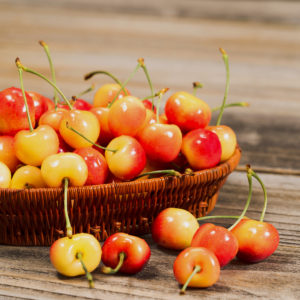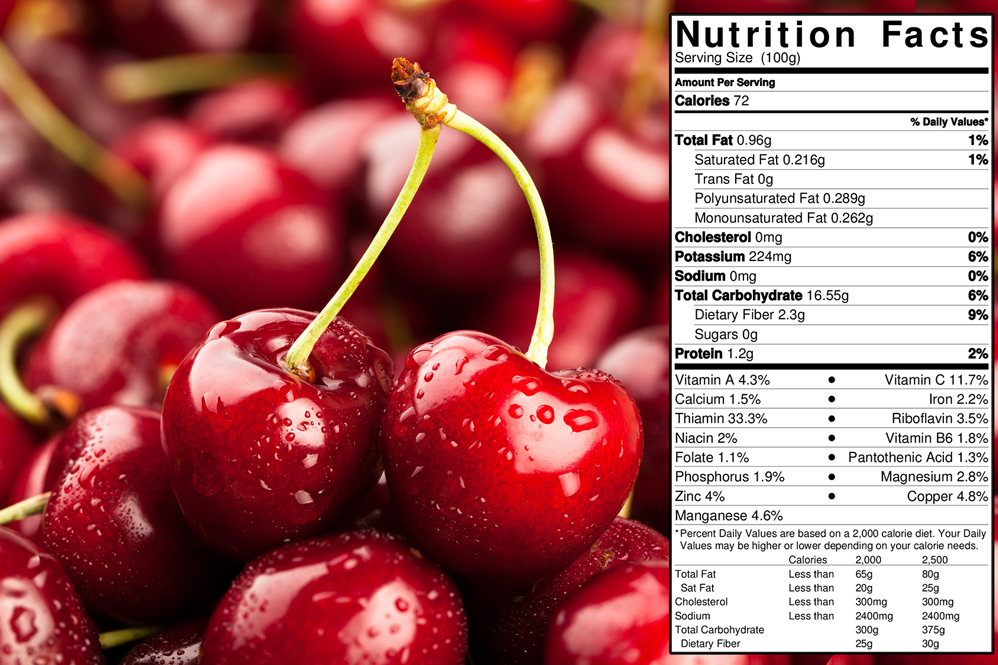
The Incomparable Cherry
Cherries are the fruits of the many plants of the genus Prunus. Also known as “drupes” or “stone fruits,” cherries are related to peaches, plums, apricots and almonds.
A cultivated cherry, as well as the apricot, is recorded as having been brought to Rome by
Lucius Licinius Lucullus from northeastern Anatolia, also known as the Pontus region, historic Armenia, in 72 BC.
The English word cherry, French cerise and Spanish cereza all come from the classical Greek (κερΑΣος) through the Latin cerasum, thus the ancient Greek place name Cerasus, today a city in northern Turkey Giresun from which the cherry was first exported to Europe. (A History of The Vegetable Kingdom, p 334)
There are over 1,000 types of cherry in the United States alone — although only 10 or so varieties are commonly commercially grown by farmers.
Sweet Cherries (Prunus avium) are usually eaten straight off of the tree. Heart-shaped and considerably larger than sour cherries, they have a firm and juicy flesh. Sweet cherries have colors that range from golden-red to purple-black. The native range of the sweet cherry runs through most of Europe, western Asia and parts of northern Africa, and the fruit has been consumed throughout its range since prehistoric times. In current times, California, Washington, Michigan and Oregon are the major producers of sweet cherries in the United States of America.
Some of the most popular sweet cherry variants include Bing, Lambert, Royal Ann and Rainier. Bing is the most popular variant and named after Ah Bing, a horticulturist that cultivated the variety. Bing cherries are round, plump and very sweet.
Lambert cherries are smaller than Bing, as well as more heart-shaped rather than round. Rainier and Royal Ann have a more yellowish color and a milder taste especially compared to the Lambert and Bing varieties. Rainier cherries are generally more expensive because of its very limited yearly production. The Royal Ann cherries are often preserved.
Sour cherries (Prunus cerasus), also known as “tart cherries,” are smaller than sweet cherries and happen to contain more vitamin C, but fewer calories. Sour cherries are subdivided into two groups: amarelles and morellos. Amarelles have a lower acid content, with colors ranging from pale-yellow to bright-red, while morellos have high acid content and red to dark-red coloring. Sour cherries are the cherries often chosen for cooking and baking.
There are many annual cherry festivals held worldwide. The Michigan National Cherry Festival has been celebrating the cherry since 1929 and holds the record for the world’s largest cherry pie. The pie stood 17′ 6″ tall and weighed over 28,300 pounds. That is a serious cherry pie. While it may not be wise to eat that many cherries at once, it would be foolish to miss out on the sweet, succulent cherries this summer season.
Cherries have a very short fruiting season. In Australia they are usually at their peak around Christmas time, in southern Europe in June, in America in June, and in the UK in mid July. In many parts of North America they are among the first tree fruits ripe; hence the colloquial term “cherry” to mean “new” or “the first”, e.g. “in cherry condition”.








